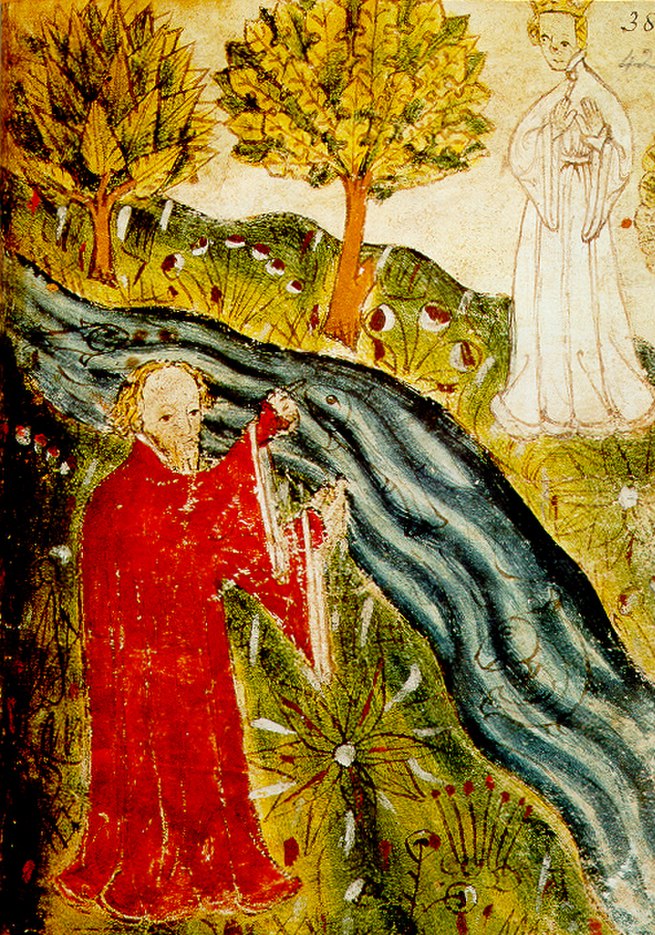
-
Allegory
As a literary device, an allegory is a metaphor whose vehicle may be a character, place or event, representing real-world issues and occurrences. Allegory (in the sense of the practice and use of allegorical devices and works) has occurred widely throughout history in all forms of art, largely because it can readily illustrate or convey complex ideas and concepts in ways that are comprehensible or striking to its viewers, readers, or listeners.
Writers or speakers typically use allegories as literary devices or as rhetorical devices that convey (semi-)hidden or complex meanings through symbolic figures, actions, imagery, or events, which together create the moral, spiritual, or political meaning the author wishes to convey.
-
Metaphor
A metaphor is a figure of speech that directly refers to one thing by mentioning another for rhetorical effect. It may provide clarity or identify hidden similarities between two ideas. Antithesis, hyperbole, metonymy and simile are all types of metaphor. One of the most commonly cited examples of a metaphor in English literature is the “All the world’s a stage” monologue from As You Like It:
This quotation expresses a metaphor because the world is not literally a stage. By asserting that the world is a stage, Shakespeare uses points of comparison between the world and a stage to convey an understanding about the mechanics of the world and the behavior of the people within it.
The Philosophy of Rhetoric (1937) by rhetorician I. A. Richards describes a metaphor as having two parts: the tenor and the vehicle. The tenor is the subject to which attributes are ascribed. The vehicle is the object whose attributes are borrowed. In the previous example, “the world” is compared to a stage, describing it with the attributes of “the stage”; “the world” is the tenor, and “a stage” is the vehicle; “men and women” is the secondary tenor, and “players” is the secondary vehicle.
Other writers employ the general terms ground and figure to denote the tenor and the vehicle. Cognitive linguistics uses the terms target and source, respectively.
-
Allegory (noun)
The representation of abstract principles by characters or figures.
-
Allegory (noun)
A picture, book, or other form of communication using such representation.
-
Allegory (noun)
A symbolic representation which can be interpreted to reveal a hidden meaning, usually a moral or political one.
-
Allegory (noun)
A category that retains some of the structure of the category of binary relations between sets, representing a high-level generalisation of that category.
-
Metaphor (noun)
The use of a word or phrase to refer to something that it is not, invoking a direct similarity between the word or phrase used and the thing described (but in the case of English without the words like or as, which would imply a simile); the word or phrase used in this way; an implied comparison.
-
Metaphor (noun)
The use of an everyday object or concept to represent an underlying facet of the computer and thus aid users in performing tasks.
“desktop metaphor; wastebasket metaphor”
-
Metaphor (verb)
To use a metaphor.
-
Metaphor (verb)
To describe by means of a metaphor.
-
Allegory (noun)
a story, poem, or picture that can be interpreted to reveal a hidden meaning, typically a moral or political one
“Pilgrim’s Progress is an allegory of the spiritual journey”
-
Allegory (noun)
a symbol.
-
Metaphor (noun)
a figure of speech in which a word or phrase is applied to an object or action to which it is not literally applicable
“her poetry depends on suggestion and metaphor”
“when we speak of gene maps and gene mapping, we use a cartographic metaphor”
-
Metaphor (noun)
a thing regarded as representative or symbolic of something else
“the amounts of money being lost by the company were enough to make it a metaphor for an industry that was teetering”
